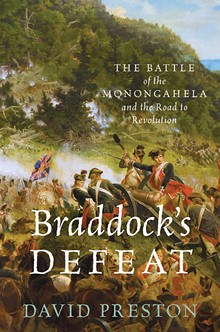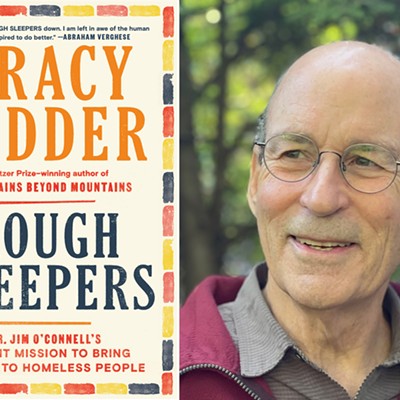What’s most interesting about Braddock’s Defeat: The Battle of the Monongahela and the Road to Revolution (Oxford University Press, $29.95) is that, the book’s title notwithstanding, author David Preston builds a strong argument that the colossal defeat was much more than just a matter of Gen. Edward Braddock underestimating his foe.
By most accounts, Braddock’s failed attempt to capture Fort Duquesne from the French on July 9, 1755, was one of England’s most humiliating military blunders. In the midst of the so-called French and Indian War, Braddock was expecting a relatively easy victory at Fort Duquesne, with his sights set on Fort Niagara. But Braddock’s lack of Native American allies and inability to adapt rigid British battle formations to the Western Pennsylvania wilderness led to his defeat.
Despite outnumbering the enemy by a significant margin, the history goes, many of Braddock’s men panicked, and the ensuing chaos gave the French and their Native American allies a quick victory. Braddock was mortally wounded and died four days later.
Not so fast, argues Preston, a history professor at The Military College of South Carolina. Those Native Americans were a highly sophisticated organization that had closely monitored and tested the British forces with a series of seemingly unrelated skirmishes. They didn’t just ambush Braddock; they carefully executed a strategy focused on weak spots in the British column.
The battle scenes are among the book’s strongest sections, offering detailed descriptions drawn from letters and eyewitness accounts. (The book’s bibliography and appendices account for 100 of its 480 pages.) The backdrop will be familiar to Western Pennsylvania readers, although given the descriptions of rugged, untamed terrain, it isn’t quite the same as spotting the City-County building in The Dark Knight.
The lessons of Braddock’s defeat have unfortunately gone unheeded time and again since 1755, Preston argues in his epilogue. “Vulnerable columns of conventional forces like Braddock’s have been frequently destroyed by indigenous forces in modern times,” he writes.
He cites the British and American struggles against tribal forces in Afghanistan and Iraq in 2001 and 2003 as contemporary examples.
Preston’s meticulous attention to detail and his obviously deep knowledge of the subject matter make for a compelling read, despite the book’s length. Braddock’s defeat might well go down in history as a loss that could have been avoided, but Preston makes it clear that the fault likely did not lie solely with the British commander.















